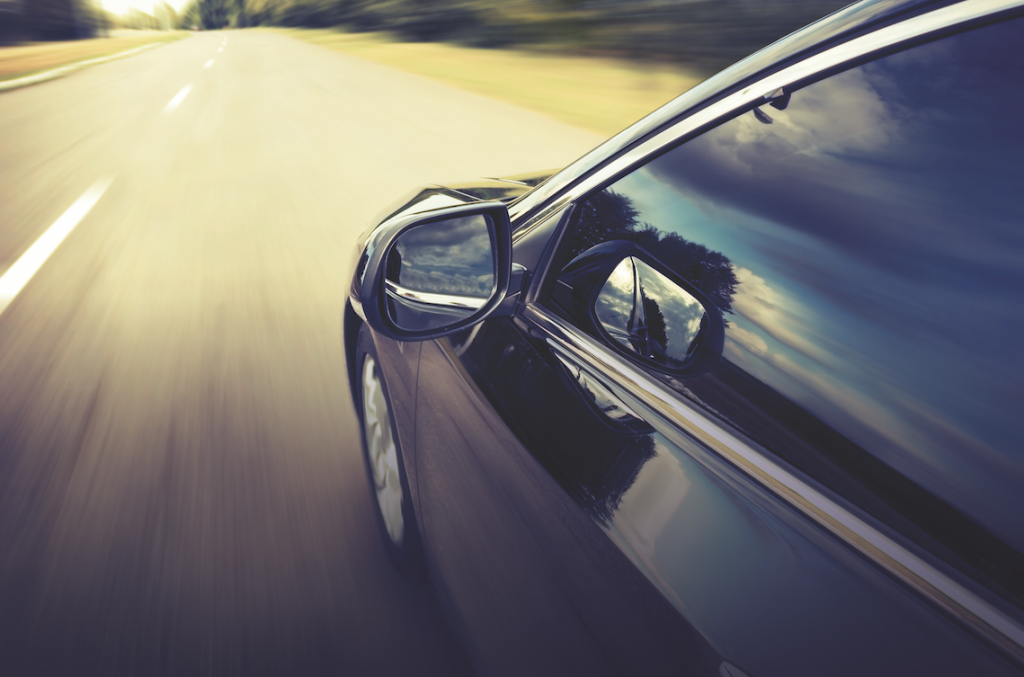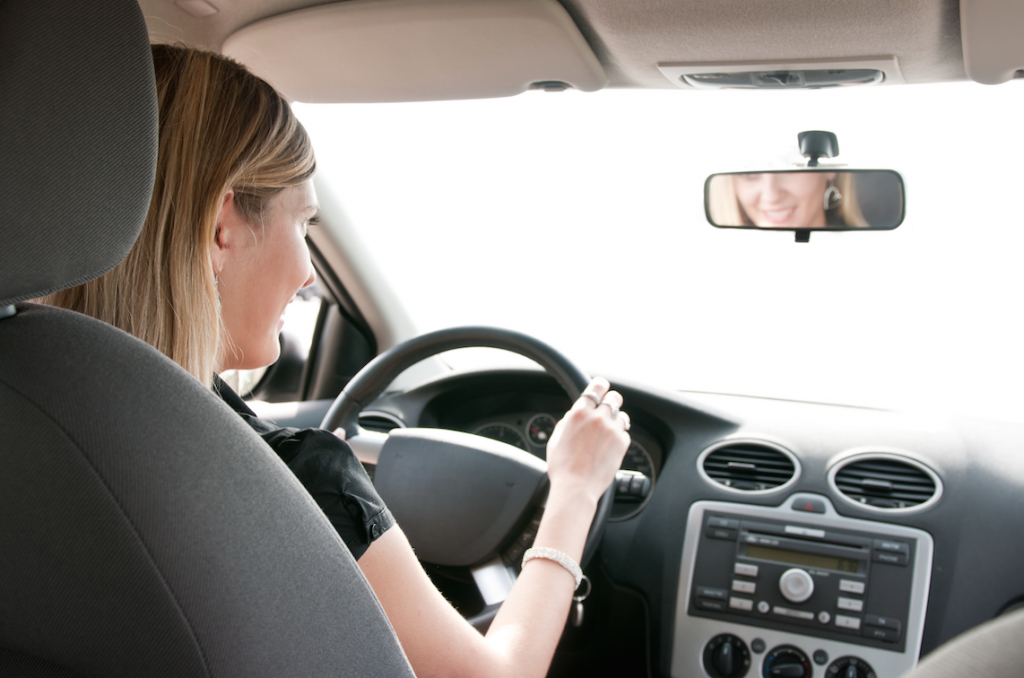Some days it may feel like you live in your car, and it makes perfect sense with the countless trips to and from schools, practices, and the grocery store. Esurance shares these tips.
The rear-view mirror’s earliest known use and mention is by Dorothy Levitt in her 1906 book The Woman and the Car which noted that women should “carry a little hand-mirror in a convenient place when driving” so they may “hold the mirror aloft from time to time in order to see behind while driving in traffic,” thereby inventing the rear view mirror before it was introduced by manufacturers in 1914.
Cut to modern times: we now have blind-spot monitoring technology available in cars ranging from Chevrolet to Mercedes-Benz. But, according to expert George Platzer, blind spots can be avoided by adjusting our mirrors properly.
Platzer’s thesis, “The Geometry of Automotive Rearview Mirrors–Why Blind Zones Exist and Strategies to Overcome Them,” recommends a way to adjust your mirrors so you can eliminate blind spots (of course, you have to wade through some complex equations first).
creating blind spots with our mirrors
Whoever taught you to drive probably told you to adjust your outside mirrors so you can see the sides of your vehicle reflected in them.
According to Platzer (who, by the way, has graduate degrees in Physics and Automotive Engineering), that traditional method pretty much guarantees two large blind spots, each one big enough to hide a car. That’s because the outside mirrors’ field of view overlaps with the inside mirror’s significantly—and that means all three mirrors are essentially looking at the same space behind you.
3 mirrors, each with a specific job
Let’s divide up the jobs of the three mirrors found on most modern cars. The inside rearview mirror gives the best view directly behind your vehicle. Although large rear-seat headrests or your passenger’s heads can get in the way, this inside mirror generally provides a clear and wide view of the cars behind you, including those traveling in adjacent lanes on multilane highways.
The sole job of the outside mirrors, then, is to reveal vehicles traveling alongside and slightly behind you. That means you should adjust these outside mirrors so there’s just a tiny bit of field-of-view overlap with the inside mirror. When the car that’s passing you moves outside the view of the inside mirror, it should start to appear in one of the side mirrors. Then, when it starts to move out of the view of that mirror, it should be visible in your peripheral vision.
How to eliminate blind spots
So, how can you perform this ideal mirror adjustment while seated in your parked car? Platzer suggests following these four easy steps:
- From the driver’s seat, position your head against the driver’s-side window, and then adjust that side’s rearview mirror so you can just barely see the side of your vehicle.
- Next, position your head to the right, more or less over the center console, and do the same type of adjustment for the passenger-side mirror.
- Once your side mirrors are adjusted properly, make sure your rearview mirror is centered for optimal view of what’s behind you.
It may sound awkward, but it works. With properly adjusted mirrors, you can minimize those quick over-the-shoulder looks before you change lanes, and, instead, simply glance in the outside mirrors and use your peripheral vision to detect cars alongside you.
Change your driving behavior
Still not convinced? Well, according to the National Highway Traffic Safety Administration, there were 1.5 million injury crashes in 2011 and nine percent involved lane-change maneuvers. While blind-spot monitoring technology is improving this stat, you don’t need to invest in a new car (or rely on technology alone) to stay safe.
Best advice: consider changing the way you adjust your mirrors. You have little to lose but old habits.
And, as a precaution, continue to look over your shoulder until you become comfortable with this method. Over time, you may find you can rely almost solely on your mirrors. It’ll be easier on your neck…and you may just save it!



